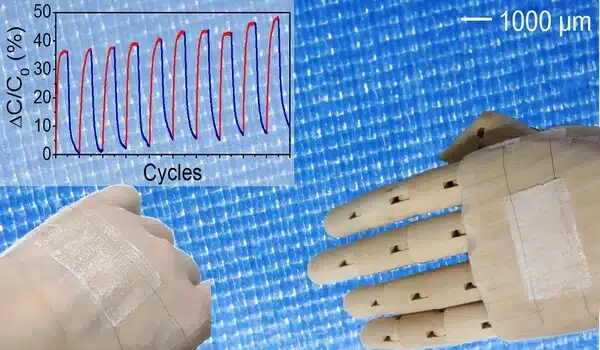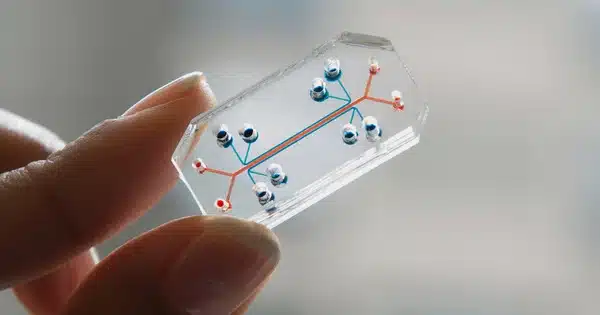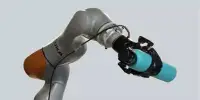Developing a color-based sensor that can detect and interpret different wavelengths of light, similar to how human skin perceives colors, entails designing a system that can detect and interpret different wavelengths of light. Melanocytes are cells in the human skin that produce pigments that are responsible for skin color.
Researchers have developed a device that uses color to sense multiple mechanical and temperature stimuli at the same time, taking a step toward more autonomous soft robots and wearable technologies.
Researchers in robotics have already made significant progress in developing sensors that can detect changes in position, pressure, and temperature – all of which are critical for technologies such as wearable devices and human-robot interfaces. However, one of the hallmarks of human perception is the ability to sense multiple stimuli at once, which robotics has struggled to achieve.
Jamie Paik and colleagues at EPFL’s School of Engineering’s Reconfigurable Robotics Lab (RRL) have developed a sensor that can perceive combinations of bending, stretching, compression, and temperature changes, all using a robust system that boils down to a simple concept: color.
Traditionally, the quickest and cheapest way to accomplish this has been through vision-based systems, which capture all of our activities and then extract the necessary data. ChromoSense enables more targeted, information-dense readings, and the sensor can be easily embedded into a variety of materials for a variety of tasks.
Jamie Paik
Dubbed ChromoSense, the RRL’s technology relies on a translucent rubber cylinder containing three sections dyed red, green, and blue. An LED at the top of the device sends light through its core, and changes in the light’s path through the colors as the device is bent or stretched are picked up by a miniaturized spectral meter at the bottom.
“Imagine drinking three different flavors of slushie through three different straws at the same time: the proportion of each flavor you get changes as you bend or twist the straws. This is the same principle that ChromoSense employs: it detects changes in light traveling through colored sections as the geometry of those sections deforms,” Paik explains.
A thermosensitive section of the device detects temperature changes by using a special dye that desaturates in color when heated, similar to that found in color-changing t-shirts or mood rings. The study was published in Nature Communications and chosen for the Editor’s Highlights page.

A more streamlined approach to wearables
While robotic technologies that rely on cameras or multiple sensing elements are effective, they can make wearable devices heavier and more cumbersome, as well as necessitate more data processing, according to Paik.
“For soft robots to serve us better in our daily lives, they need to be able to sense what we are doing,” she said. “Traditionally, the quickest and cheapest way to accomplish this has been through vision-based systems, which capture all of our activities and then extract the necessary data.” ChromoSense enables more targeted, information-dense readings, and the sensor can be easily embedded into a variety of materials for a variety of tasks.”
Thanks to its simple mechanical structure and use of color over cameras, ChromoSense could potentially lend itself to inexpensive mass production. In addition to assistive technologies, such as mobility-aiding exosuits, Paik sees everyday applications for ChromoSense in athletic gear or clothing, which could be used to give users feedback about their form and movements.
ChromoSense’s ability to sense multiple stimuli at once can be a strength and a weakness, as the researchers are still working on decoupling simultaneously applied stimuli. Paik says they are currently working on improving the technology to detect locally applied forces or the exact boundaries of a material when it changes shape.
“If ChromoSense gains popularity and many people want to use it as a general-purpose robotic sensing solution, then I think further increasing the information density of the sensor could become a really interesting challenge,” she said.
















